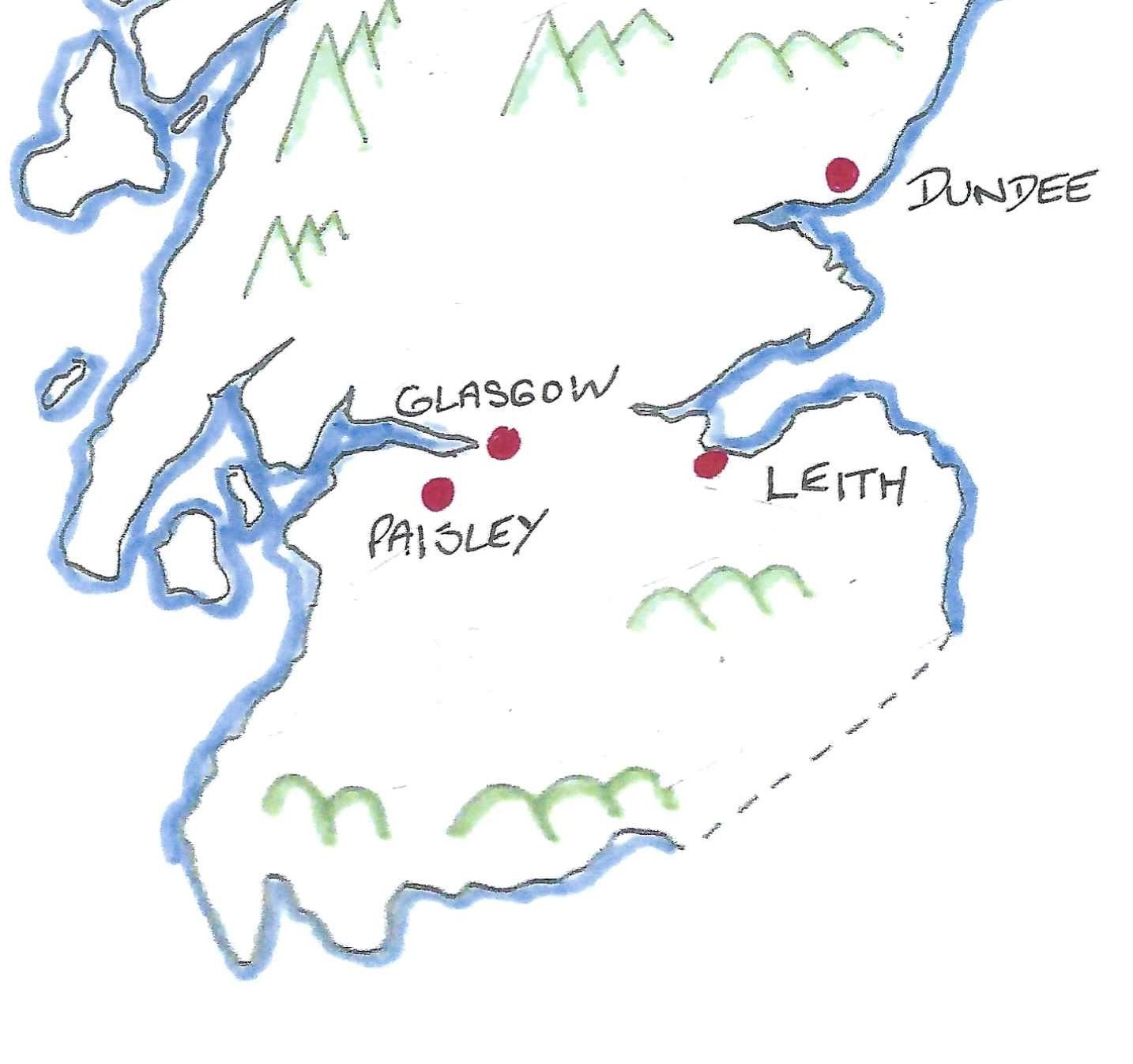Geology is Destiny
I always wondered why my ancestors stayed in Scotland and didn’t emigrate like so many Scots did. The answer lies partly in where they originated…
Major fault lines in Scotland
Scotland’s landscape was formed millions of years ago and its gorgeous scenery is a result of massive upheavals in the earth’s crust. Here you can see the major fault lines:
The Great Glen Fault is where Loch Ness stretches from Fort William to Inverness.
The Highland Boundary Fault divides the Highlands from the Lowlands
The Central Lowlands is gentle rolling farmland with deposits of coal and iron as well as fast running streams and deep harbors.
Not much happens in the Southern Uplands except for the fact that the town of Moffat is there!
Distribution of my Scottish families
All my Scottish families originated in rural areas in the Central Lowlands with the exception of the Munros from Cromarty. George Gordon Smith Munro was a blacksmith who moved to Leith with his family in 1865.
They were not turned off the land as were the Highlanders during the Highland Clearances but began as farmers and weavers in the 17th and 18th centuries and migrated to the cities during the Scottish Industrial Revolution (1800 - 1950)
All the direct ancestors moved to these four cities in the 1800s
Glasgow was known for shipbuilding, shipping, manufacturing. The Workmans came from Antrim to Glasgow and were a family of sailmakers and riggers. Matilda Workman moved to Leith around 1900 and married my great grandfather George Brodrick Robertson.
Paisley was known for cotton and silk mills. The Thomsons and Templetons moved there from Ayrshire. The Moffats moved there from Airdie. The McInnes moved there from Dumbarton.
Leith was known for shipbuilding, shipping, whaling, rope making, and manufacturing. The Robertsons originated in Midlothian and came to Leith in the early 1800s for their children to find work, as did the Hunters from Inveresk and several families from Ireland: McCabes, Greenans and Smiths. The oldest family in my tree, the Woods were from Prestonpans just along the coast.
Dundee was a port known for shipping, textiles and whaling. My dad’s mother’s families, the Clarks and MIllars came to Dundee to work in the textile industry. The MIllars were drapers from Fife and the Clarks were originally farmers in Perthshire.
Irish ancestors moved to Scotland around 1800
The Irish (Roman Catholic) families on my mum’s side came from County Cavan and other places to Leith in the early 1800s, maybe as a result of the Potato Famine?
The Workmans were from Antrim which was largely Protestant as did the Moores on my dad’s side. Eliza Ann Moore was a seamstress who moved to Paisley and married James Moffat.
4 great great great grandparents were born in Ireland which gives me 25% Irish heritage!
My ancestors seemed to move for opportunity rather than stay put and they didn’t feel the urge to seek prosperity overseas. The first family to leave Scotland were the Millars - in about 1895 they moved to Norfolk in England for Andrew Millar to pursue his career as a draper or maybe to get away from the unhealthy life in Dundee which was overcrowded. After her parents died tragically their daughter Lizzie moved back to Scotland and married my grandfather John McInnes Moffat from Paisley.
Rarely family members have swam against the tide.
In about 1860 George Chapman, a farm laborer in Kinglassie Fife, moved his family up to Ross and Cromarty in the Highlands. This was a time when everyone else was moving south. His daughter married George Gordon Smith Munro the blacksmith and they moved south to Leith. George Chapman and his wife moved back down to Fife eventually. I’m not sure why they headed north - it’s really unusual.
My nephew Callum Moffat was born in Bristol and grew up in England. He has recently moved back to Scotland and lives south of Edinburgh, a few miles from where our earliest ancestors lived.




